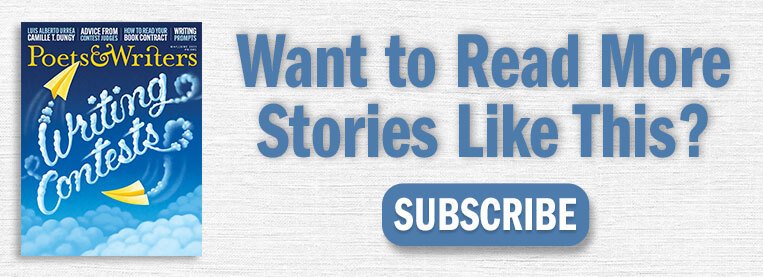Every day Poets & Writers Magazine scans the headlines—from publishing reports to academic announcements to literary dispatches—for all the news that creative writers need to know. Here are today’s stories:
Novelist and essayist Teju Cole dedicates his latest New York Times On Photography column to the photographs of the Black Lives Matter movement—in particular, the photo of protester Ieshia Evans being detained in Baton Rouge, Louisiana, earlier this month.
Looking for a reason to read the fiction of Joy Williams? Nick Ripatrazone lists fifty. “Number one: Because the ineffable deserves a voice that captures its curves and cracks.” (Millions)
The 2016 Man Booker Prize long list has been announced. The thirteen finalists include Paul Beatty’s The Sellout, Ottessa Moshfegh’s Eileen, and Elizabeth Strout’s My Name Is Lucy Barton. The £50,000 prize is given annually for a book of fiction in English; the winner of the will be announced on October 25.
According to Millions editor Lydia Kiesling, there has been a shift in workplace fiction over the past two decades: More novels in the genre are written by and marketed towards women. “These books provide mapping, contextualizing, and rich illustration of women’s working lives. They form a kind of counter-tradition of office literature, dealing with the same bureaucracies and white-collar doldrums that have inspired male novelists but reflecting the particular challenges and preoccupations of women in the workforce.” (New Yorker)
Comic book writer Marjorie Liu speaks about her new graphic novel, Monstress; how her experiences as a biracial child shaped her writing; and the importance of making women of color, particularly Asian women, central to her work. (NPR)
Meanwhile, at the Believer, fiction writer Annie DeWitt discusses the seven-year process of completing her forthcoming novel, White Nights in Split Town City, the challenges of the writing life, and the use of purposeful ambiguity in fiction: “I think there is a vast difference between lack of clarity and a purposeful use of the unsaid as a way of heightening tension. To me, allowing the viewer to understand subtle cues is a respect I always want to afford my reader—the acknowledgement that I don’t need to explain everything to him or her.”
For the first time in the lookalike contest’s thirty-six-year history, an actual Hemingway has been named this year’s “Papa” Hemingway Lookalike. (Guardian)







